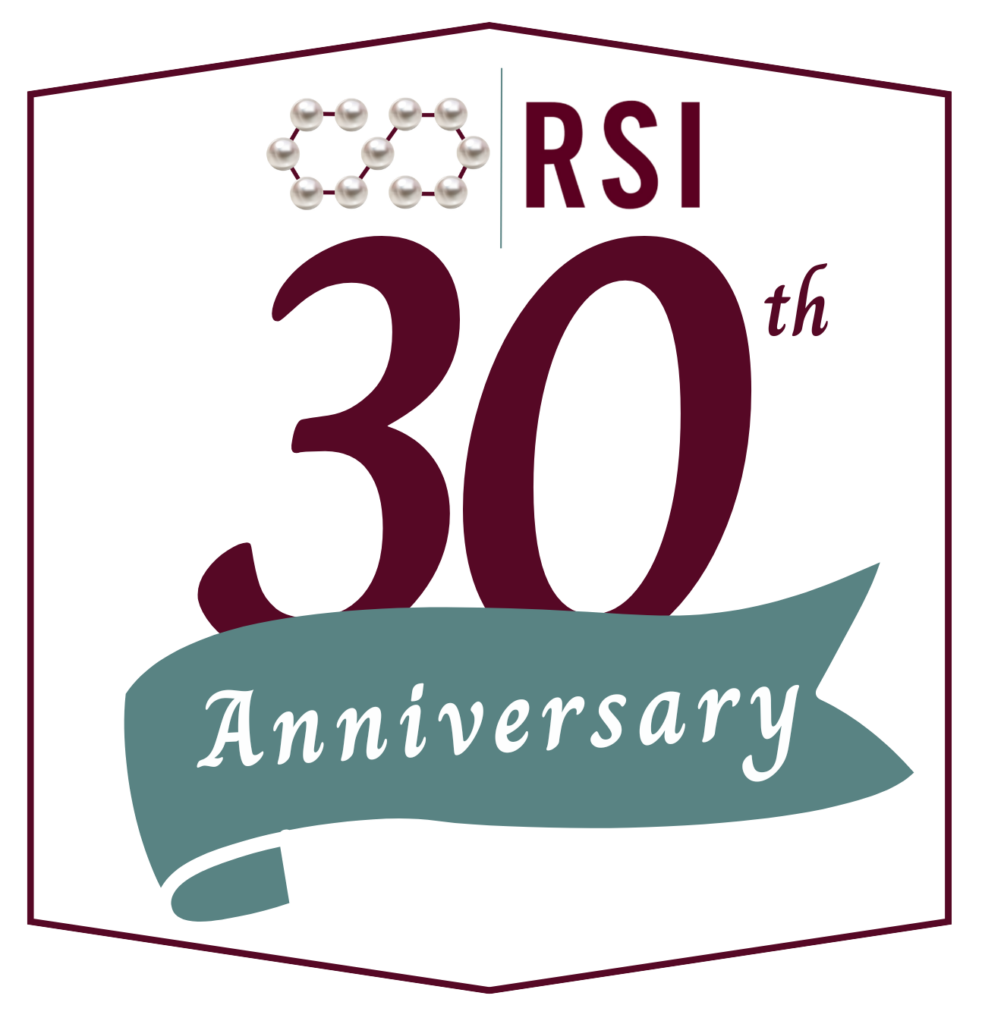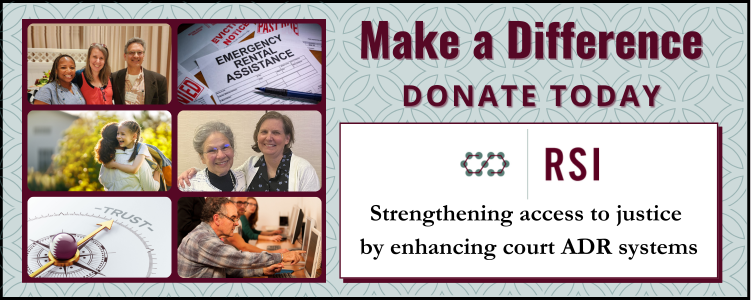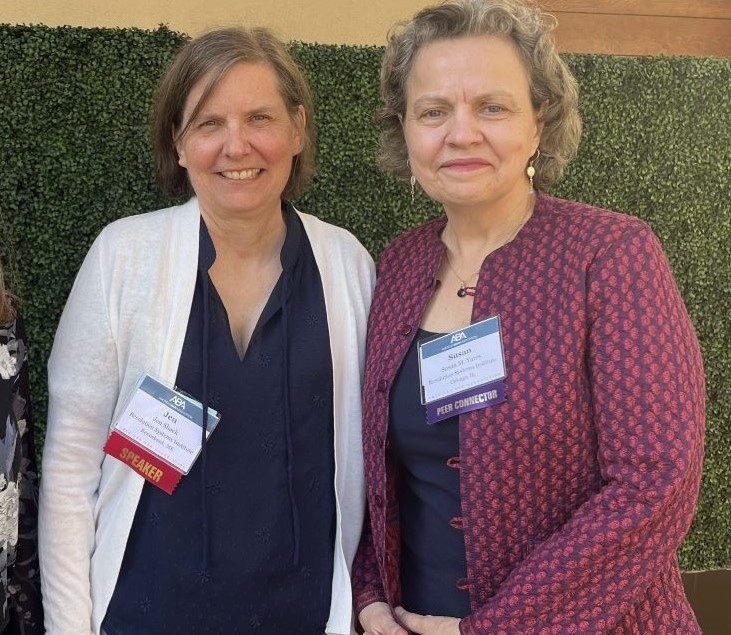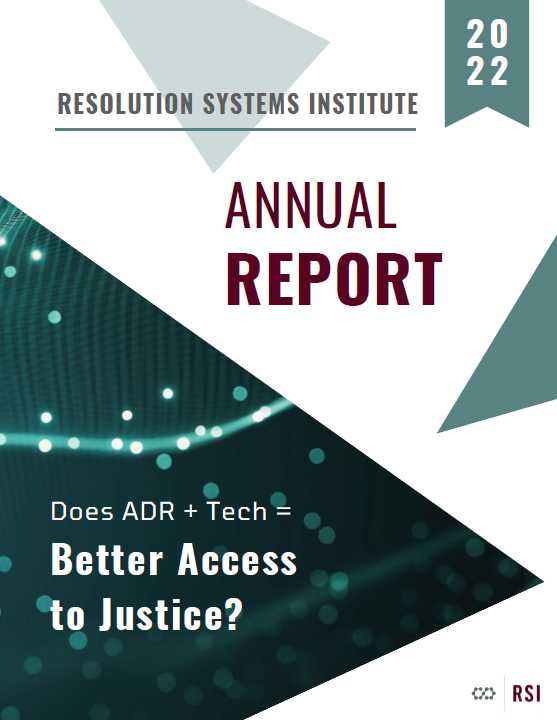This year marks an incredible milestone as Resolution Systems Institute (RSI) celebrates 30 years of impact! As someone who counts herself among those who have benefited from the work of RSI over the years, I am deeply grateful for the strong foundation RSI stands on today. As we reflect on three decades of service, we appreciate and consider ourselves fortunate to recall the countless lives touched, the ADR programs improved, the knowledge gained and the amazing partners who have walked beside us throughout this journey.

My colleagues and fellow alternative dispute resolution (ADR) researchers introduced me to RSI while we worked on similarly ambitious projects for evaluating statewide efforts to implement ADR and program-specific survey evaluations of court ADR programs. I learned of the foreclosure and eviction mediation programs through our common court ADR panel presentations at national conferences. I quickly came to rely on RSI as a resource that included the most current innovations, advances and findings in the field of ADR. RSI has always been on the forefront and continues to shape the field by improving our understanding of court ADR.
From RSI’s humble beginnings as a big idea shared among colleagues in a casual conversation, we set out to impact court ADR by growing and sharing knowledge. What began as a small group of passionate individuals dedicated to court ADR has now grown into a well-established force for change, strengthening access to justice by enhancing court alternative dispute resolution systems.
A Journey Through Time: 30 Years of Progress
Over the years, RSI has experienced both challenges and triumphs, and each step along the way has renewed our commitment to court ADR. When we look back at the moments and events that have shaped us, we can’t help but feel immense pride in what we’ve accomplished:
- Guiding Program Design: In the late 1990s, RSI helped get civil case mediation off the ground in Illinois by providing expert guidance to Illinois state courts and federal courts as they established civil case ADR programs. Over time, we worked on programs with a broader array of case types and parties, and helped programs nationally; and in 2007, informed by our own research, RSI created the Statewide Mediation Access Project to develop programs to improve access to justice through mediation for low-income disputants. As our mission statement affirms, guiding and supporting court efforts to strengthen access to justice through court ADR has been a throughline in RSI’s work ever since.
- Studying What Works, and Creating Tools to Support It: In 2003, RSI Director of Research Jennifer Shack’s article “Mediation Can Bring Gains, But Under What Conditions?” summarized a survey of the findings of 62 studies of court-related mediation. The article posited that the ADR field must focus less on whether mediation is effective, and more on the circumstances under which it is most effective. To a large degree, RSI’s research over the years has continued to examine the article’s overarching question by evaluating the program design and impacts of court ADR in child protection, foreclosure and eviction cases, as well as more recent advancements of online dispute resolution. This research has also informed our development of tools to assist programs in conducting accessible, effective ADR. Examples include RSI’s recent studies of text-based online dispute resolution programs; our ODR Party Engagement (OPEN) study, guides and models; and our ongoing research on what leads to trust during mediation.
- Responding to Immediate Needs: In 2013, RSI responded to the foreclosure crisis by providing courts throughout the U.S. resources and technical assistance, offering mediator training, and designing and administering foreclosure mediation programs in three Illinois counties. In 2016, we expanded our mediation services, developing and administering a child protection mediation program in Kane County, Illinois. And in 2021, responding to the pandemic-induced eviction crisis, we launched eviction mediation programs in three Illinois counties. RSI’s mediation programs have provided direct services to thousands of people over the years. But they also serve as an active knowledge base, enabling us to learn more about that question raised by Jen Shack’s 2003 article; in short, what works?
Each of these pivotal moments in our history is a testament to the hard work of our dedicated staff, Board, donors, funding partners and supporters.
Looking Ahead: The Next 30 Years
While we celebrate our past, we’re also looking toward the future. The world continues to change, and so do the challenges we face. Through it all, our mission remains as important and relevant as ever. In the coming years, we are committed to:
Join Us in Celebrating!
We’ll be celebrating all year long! Please stay tuned here for more ways to connect and join us in celebration as we share details of programs and events to come!
- Eliminating Barriers: We believe that strengthening access to justice by enhancing court ADR gives more people an array of options for resolving conflict in ways that feel fair and facilitate mutual understanding.
- Innovating: We will continue to explore new projects to explore the use of technological advancements in ADR while addressing the pressing issues of reducing barriers to access to justice for everyone.
- Expanding our Reach: As a convener, we plan to extend our impact even further by bringing together court administrators and ADR program directors to share insights, successes and challenges.
A Heartfelt Thank You
None of this would have been possible without the support of our incredible ADR community. To our Board members, donors, roster mediators, partners, funders, collaborators, staff and all of those who have stood with us over the years, thank you. Your unwavering belief in our mission has been a driving force behind every success.
As we mark our 30th anniversary, we are excited to celebrate not just what we have achieved, but also the promise of what’s yet to come. The future is bright, and we are so grateful to have you by our side as we continue this journey together.
Here’s to 30 years of impact — and to the many more years ahead!






